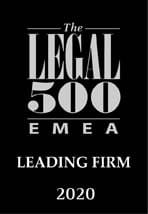One of the European Union’s key objectives is to make Europe a climate-neutral continent by 2050. To achieve this goal, the package of measures named the European Green Deal and the Taxonomy Regulation (Regulation EU 2020/852) were adopted, which already contains a rating system and criteria that directly affect market participants. Two technical annexes have been adopted in connection with the regulation (“Technical Annexes”), which define sustainability requirements in detail. Undertakings that do not meet these criteria will no longer be eligible to declare themselves sustainable from 1 January 2022, the date on which those Annexes are expected to enter into force. Enterprises that do not meet these criteria will no longer be eligible to declare themselves sustainable from 1 January 2022, the date on which those Annexes are expected to enter into force.
However, in addition to overcoming the “greenwashing” phenomenon, the new EU environmental rules could have a number of additional consequences and significantly affect the future prospects of market participants. With the present summary, we want to provide guidance to businesses that want to prepare in time for the challenges of the future along the most frequently arising questions.
What happens if an enterprise does not comply with the Taxonomy Regulation?
[1] The Taxonomy Regulation imposes an obligation to publish the environmental impact of a company’s activities and sets out the criteria for the concept of “sustainability”. Although the disclosure obligation directly affects only large companies and financial market participants, it can indirectly affect all business partners and investors related to them, and thus ultimately all market participants.
[2] With regard to the Taxonomy Regulation, large companies must, inter alia, inform the public about the extent to which they meet the sustainability criteria set out in the supplementary annexes. Financial market participants and advisers are required to publish on their websites how sustainability risks are taken into account in their investment decision-making processes and advice. In their pre-contractual disclosures, financial product companies are also required to inform the other contracting party on how they consider the sustainability of the investment and the expected effects of the resulting risks on returns. From the end of 2021, financial companies and other large companies will have to adapt the disclosure rule obligations in 2022. This obligation shall enter into force gradually during 2022.
[3] Over time, achieving carbon neutrality will become increasingly important for both investors and financiers, as it can be a major strategic advantage for a business. The following are three important arguments as to why it is worthwhile for any business to strive to comply with the Taxonomy Regulation now:
Reputation: The reputation of companies, and thus their profitability, can be greatly affected by the extent to which their activities are environmentally friendly. Nothing proves this better than the widely known concept of greenwashing, which is used to describe when a company, fearing its business reputation, tries to “green wash” and make its activities that are actually harmful to the environment environmentally conscious. The reason behind this widespread phenomenon is that consumers / end-users / customers are increasingly consciously avoiding the products and services of companies that harm the environment. As mentioned, from 2022 onwards, only businesses and activities that comply with the Taxonomy Regulation and its detailed supplementary technical annexes can call themselves sustainable.
More favourable financing: Sustainable forms of investment and companies can expect more investors and more favourable forms of financing, thus gaining a competitive advantage. Some banks are already lending to environmentally friendly forms of investment and businesses at more favourable interest rates. In its recommendation issued at the end of 2020, the MNB (The Central Bank of Hungary) specifically encouraged banks to make this positive distinction. The green asset strategy the MNB includes the Loan Program for Growth which are granted for such investments that comply with the aims of the green strategy.
„Cliff edge effect” – or to avoid the brink of the abyss: While the goal of climate neutrality for 2050 may seem too ambitious and remote, it is important to keep in mind that the EU sees this as the ultimate goal of a long-term strategy. It is therefore to be expected that, in the future, there will be an increasing rate and number of rules, both indirectly and directly, on the day-to-day operation and future of companies. Thus, for example, the EU will already consider at the end of 2021 the direction in which it is worth expanding the Taxonomy regulation. Companies that are already starting to align with the Taxonomy Regulation and its Technical Annexes will be able to adapt more quickly and efficiently to changes in both the natural and regulatory environments. In contrast, companies that postpone meeting environmental criteria may soon find themselves on the brink of the abyss. Implementing ever-increasing rules will place a
growing burden over time, while these companies are likely to face increasingly unfavourable funding and an increasing competitive disadvantage. In this respect, the concept of sustainability in the Taxonomy Regulation also carries a second meaning. Not only from an environmental but also from an economic point of view, companies and forms of investment that meet the criteria of the Taxonomy Regulation are considered sustainable.
[4] It is worth noting that the above arguments do not only apply to companies subject to the disclosure obligation, but to essentially all companies on the market. In order to be able to comply with the regulations that apply to them, financiers, investors and large companies must also monitor their business partners, and presumably they will also expect information and services in accordance with the Taxonomy Regulation.
[5] Another interesting consideration is whether and to what extent the sustainability criteria listed in the preambles of the various treaties so far, largely without stakes, will incorporate among the quality criteria the detailed criteria of the Technical Annexes from 2022 onwards and if so, to what extent. This is because, if they are built into the contract, they can also establish the liability of the designer / contractor for breach of contract.
Which businesses are considered sustainable?
[6] The Taxonomy Regulation identifies 6 objectives:
- climate change mitigation;
- adaptation to climate change;
- sustainable use and protection of aquatic and marine resources;
- the transition to a circular economy; pollution prevention and reduction; and;
- protection and restoration of biodiversity and ecosystems.
[7] An economic activity is considered sustainable if it contributes significantly to the promotion of at least one of these objectives, but does not significantly undermine any of the objectives and complies with the minimum safeguards set out in the Regulation. When an enterprise can meet these general conditions is specified in the Technical Annexes with engineering precision.
[8] These technical annexes set out detailed criteria for the following main economic activities: construction of new buildings; modernization of existing buildings; installation, maintenance and repair of energy efficiency equipment; installation, maintenance and repair of charging stations for electric vehicles inside buildings (and in car parks belonging to buildings); installation, maintenance and repair of instruments and devices for measuring, regulating and monitoring the energy performance of buildings; installation, maintenance and repair of renewable energy technologies; purchase and ownership of buildings.
What are the specific requirements for real estate?
[9] There are a number of provisions in the Technical Annexes relating to the sale, purchase, construction, modernization and other use of immovable property, the following important rules are highlighted without claiming to be exhaustive:
Sale and purchase of real estate: For buildings built prior to 31 December 2020, the purchase of such buildings is in line with the objectives of the Taxonomy Regulation, which have at least “class A.” energy certificate or if the building is in the upper 15% of the national or regional building stock expressed as operative primary energy demand and supported by appropriate evidence. For buildings built after 31 December 2020, these objectives will be met if the building meets the criteria for new buildings in the Annex that are relevant at the time of purchase.
Construction of a new building: For the construction of new buildings, the primary energy demand specifying the energy efficiency of the building shall be at least 10% below the threshold set out in national measures implementing Directive 2010/31 / EU of the European Parliament and of the Council for nearly zero energy buildings. The energy efficiency must be certified by the energy efficiency certificate of the finished building. In Hungary, the said directive was transposed by Act LVII of 2015. and Annex 6 of the TNM (Minister without portfolio) Decree No. 7/2006. (V. 24.) contains the threshold value and the factors and tests relevant for its calculation. For example, in the case of the construction of a building larger than 5,000 m2, the building must be subjected to an airtightness and heat resistance test and any deviations from the energy efficiency levels set at the design stage and external boundary defects must be brought to the attention of investors and customers. For such a floor space, an additional requirement is to calculate the global warming potential for the entire life cycle of the building and communicate it to investors and customers upon request.
With regard to the related Hungarian legislation, it is worth recalling that according to the above-mentioned TNM Decree, from 30 June 2022, buildings that do not meet the nearly zero energy demand may not receive occupancy permit, acknowledgment or official certification. And new government buildings are already governed by these rules.
Construction: When designing and constructing new buildings, amongst others care must also be taken to ensure that the water flow in the bathroom and kitchen taps does not exceed 6 litres / minute, in the case of showers this value is 8 litres / minute. At least 70% by weight of non-hazardous construction and demolition waste generated during construction must be prepared for re-use, recycling and other type of material utilization. Similar regulations can already be found in our domestic legislation. For example, BM – KvVM joint decree No. 45/2004. (VII. 26.) stipulates that above a certain amount of construction waste, if technically possible, the builder must use it during the construction, if not then it must be handed over to the waste manager. This amount is 20 tons for excavated soil and concrete debris, 5 tons for asphalt debris and wood waste, and 2 tons for plastic and metal waste.
Electric charging station: The relevant supplementary annex specifically states that the installation, maintenance and repair of charging stations for electric vehicles is a green economic activity. In Hungary, due to the amendment of TNM Decree no. 7/2006. (V. 24.) in 2021, for example, we can already find a specific obligation to do so, in Annex 8 of the said legislation. In the case of non-residential buildings under new construction or major renovation with more than ten parking spaces, at least one electrical charging point shall be installed, and every fifth parking space shall be provided with an electrical connection facility allowing the installation of charging points for electric vehicles at a later date. Also, an installation with an electrical receiving connection must be installed in each parking lot, which also allows for the installation of charging points at a later date. In the case of existing buildings, for non-residential buildings with more than 20 parking spaces, at least 1 electrical charging point shall be installed from 1 January 2025 if the car park is located inside the building or directly next to the building.
How should you start incorporating Taxonomy rules into everyday practice?
Although there is currently no direct sanction for disregarding the Taxonomy rules (except for the provisions implemented in domestic legislation as well), in our opinion the direct and indirect economic effects described above are in themselves a sufficient reason for market participants to start implementing these rules now.
Real estate investors should review their portfolio from a legal and technical point of view according to the criteria set out in the Technical Annexes. It is important for designers and contractors to be able to apply these rules and to consciously shape their contractual practices accordingly, and to settle their related liability issues accordingly. Furthermore, in order to obtain or provide favourable sources of financing and investment respectively, it may be crucial for all market participants to be able to present and control the economic activity in question in accordance with the Taxonomy rules.
When a company is considering transposing the Taxonomy Regulation, it is worth looking at the process of GDPR regulation, which once seemed to be a similarly endless process, but now defines the everyday lives of essentially all market participants.
Authors: dr. Fenyőházi András és dr. Rajkai Bence




